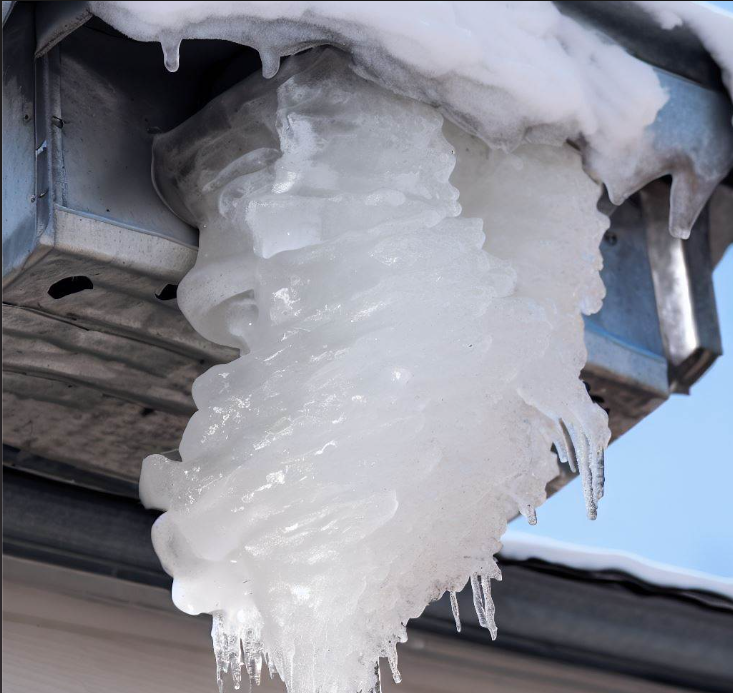As winter blankets the landscape, your home’s exterior faces new challenges, including the potential for ice build-up on your dryer vent. This issue can lead to reduced efficiency, increased drying times, and even safety hazards. In this blog post, we’ll delve into the causes and consequences of ice build-up on a dryer vent and provide valuable insights on how to effectively address and prevent this common wintertime problem.
Understanding the Causes
Ice build-up on a dryer vent occurs when the warm, moist air expelled from the dryer meets cold temperatures outside. This moisture can freeze on the vent’s exterior, creating a barrier of ice. Several factors contribute to this phenomenon:
- Moisture from the Dryer: As your dryer expels warm, moist air, it carries water vapor that can freeze upon contact with cold surfaces.
- Vent Location: The vent’s location can impact its vulnerability to ice build-up. If the vent is in an area with minimal sunlight or warmth, ice accumulation is more likely.
- Inadequate Ventilation: A poorly ventilated vent can allow excess moisture to linger, increasing the chance of ice forming.
- Condensation: Moisture can condense within the vent due to temperature fluctuations, contributing to ice formation.
Consequences of Ice Build-Up
Ice build-up on your dryer vent can lead to several undesirable consequences:
- Reduced Airflow: Ice obstructs the vent’s opening, restricting the flow of moist air from the dryer. Reduced airflow can result in longer drying times and less efficient drying performance.
- Fire Risk: A blocked dryer vent can lead to overheating, which in turn can create a fire hazard. As the dryer works harder to expel air, it generates excess heat that can ignite lint or debris.
- Increased Energy Consumption: Longer drying times due to reduced airflow can lead to higher energy consumption and increased utility bills.
- Appliance Strain: The dryer’s heating elements and motors may experience strain when working in suboptimal conditions, potentially shortening the appliance’s lifespan.
Addressing and Preventing Ice Build-Up
Here are effective strategies to address and prevent ice build-up on your dryer vent:
- Regular Maintenance: Regularly inspect the vent for signs of ice accumulation. Remove any ice or snow to prevent blockages.
- Ensure Proper Ventilation: Adequate ventilation prevents moisture from lingering in the vent. Make sure the vent is clear of any obstructions that could hinder air circulation.
- Insulate the Vent: Wrapping the vent with insulation can help maintain a consistent temperature and reduce the chances of ice formation.
- Redirect Moisture: Consider redirecting the dryer vent exhaust away from areas prone to ice build-up, such as shaded spots or areas with poor sunlight exposure.
- Heat Tape: Installing heat tape along the vent can help prevent freezing by providing a controlled heat source.
- Consider Alternative Locations: If possible, consider relocating the vent to an area less prone to ice accumulation.
Conclusion
Ice build-up on your dryer vent is a winter challenge that can compromise efficiency, safety, and appliance longevity. Understanding the causes, consequences, and effective strategies for addressing and preventing ice build-up is essential for maintaining your dryer’s performance and ensuring a safe and productive winter season. By staying vigilant and implementing preventative measures, you can avoid the risks associated with ice build-up and enjoy hassle-free laundry even during the coldest months.

